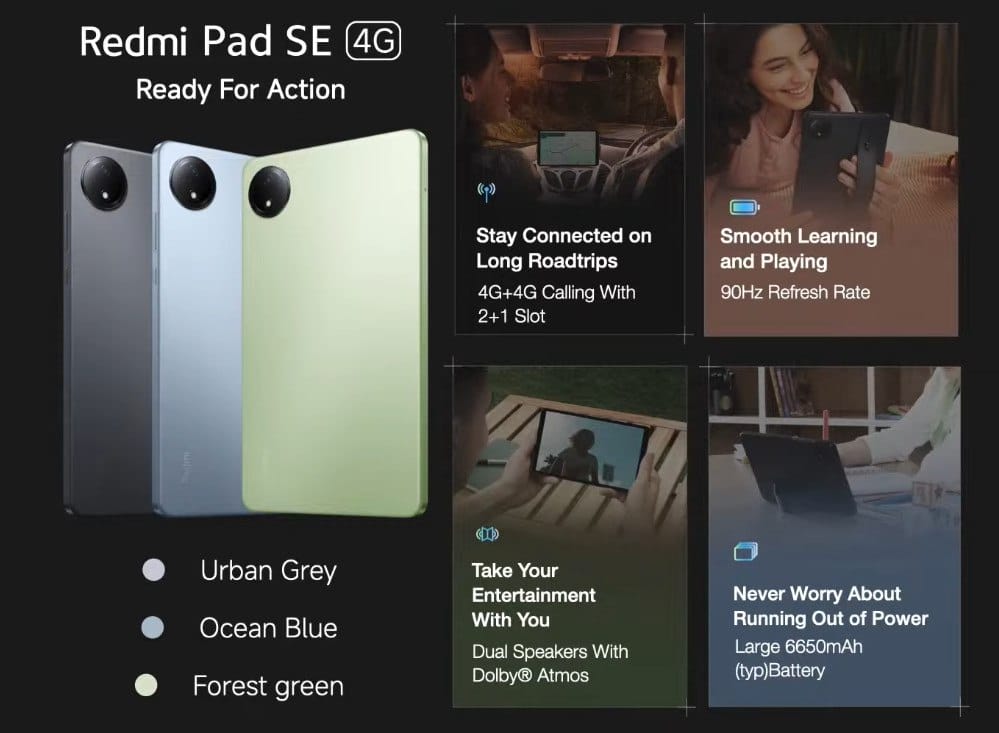Xiaomi has just released the Redmi Pad SE 4G in India; the point for debate is its inclusion of the MediaTek Helio G85 processor. That sounds rather dated, with the announcement back in April 2020, raising many questions in the minds of tech lovers and customers about what strategy Xiaomi will apply on this old chip set applied on a freshly launched device.
Backstory and Comparison
The company had launched the Pad SE in Europe last year with a more modern and more efficient chipset—that is, the Snapdragon 680 processor—built on the 6nm process. Fast track to April 2024: Xiaomi launched the Wi-Fi only variant of the Pad SE in India without cellular connectivity. Now, toward the end of July 2024, Xiaomi has launched the Pad SE 4G variant for this. But there are some cost-cutting measures in this new variant. Downgrades in the Redmi Pad SE 4G
Unlike the Wi-Fi variant of the Redmi Pad, the Redmi Pad SE 4G is tagged with a few noteworthy downgrades:
- Display Size: The screen size has been reduced from 11 to 8 inches; hence, this model may not be that suitable for people who want a bigger screen on their netbook mainly due to multimedia and productivity-related purposes.
- Processor: It comes with a toned-down processor, moving from the Snapdragon 680 to the MediaTek Helio G85. On paper, however, the Helio G85 sounds like a pretty capable processor; it’s built on an older 12nm manufacturing process, which isn’t as power-efficient compared to that found on the Snapdragon 680, built using the 6nm process.
- Battery Capacity: Finally, the battery capacity will also be reduced from 8000mAh in the Pad SE down to 6650mAh in the Pad SE 4G. This may prove disadvantageous to those who require a longer life out of their batteries for daily use.
Pricing and Market Positioning
Despite all the significant downgrades, the Redmi Pad SE 4G costs only a little less than the Wi-Fi variant:
- 4GB + 64GB: It will come at a price of Rs. 10,999, as compared to only the Wifi model.
- 4GB + 128GB: Rs. 11,999.
The difference in price is negligible against these downgrades, with the 4G variant coming in at only Rs. 900 (about 10 USD) lower than that of the Wi-Fi model. Indeed, one may wonder what the sense is in this pricing strategy for the 4G model, particularly where cost-saving measures unreflective of drastically reduced specifications are taken into consideration.
Market Reaction and Consumer Outlook
The call to outfit the new tablet with a four-year-old processor has received mixed reviews from the market. While the Helio G85 still is—not so bad—a usable chipset to this day for most mundane purposes, enthusiasts who are more serious about their devices and have kept tabs on the proliferation of processors may quite perceive it as further back, especially when improved and optimized processors come at comparative prices.
While the Redmi Pad SE 4G might still hold some attraction for any consumer needing basic tablet functions and 4G connectivity through its brand value and added option for internet connectivity, those looking at performance, battery life, and refreshingly modern experiences may find more value in the Wi-Fi variant or other contenders.
This clearly showcases the strategy of Xiaomi when launching the Redmi Pad SE 4G in India, which packs an older generation MediaTek Helio G85 processor: give the consumer choices and balance cost with functionality. While it offers those who need 4G connectivity on a very tight budget, said users may find some inclination in the tiny price difference and significant downgrades compared to the Wi-Fi version. How well this balance of cost-cutting and features will go down in the increasingly competitive tablet market is yet to be seen.


 Emir Bardakçı
Emir Bardakçı



